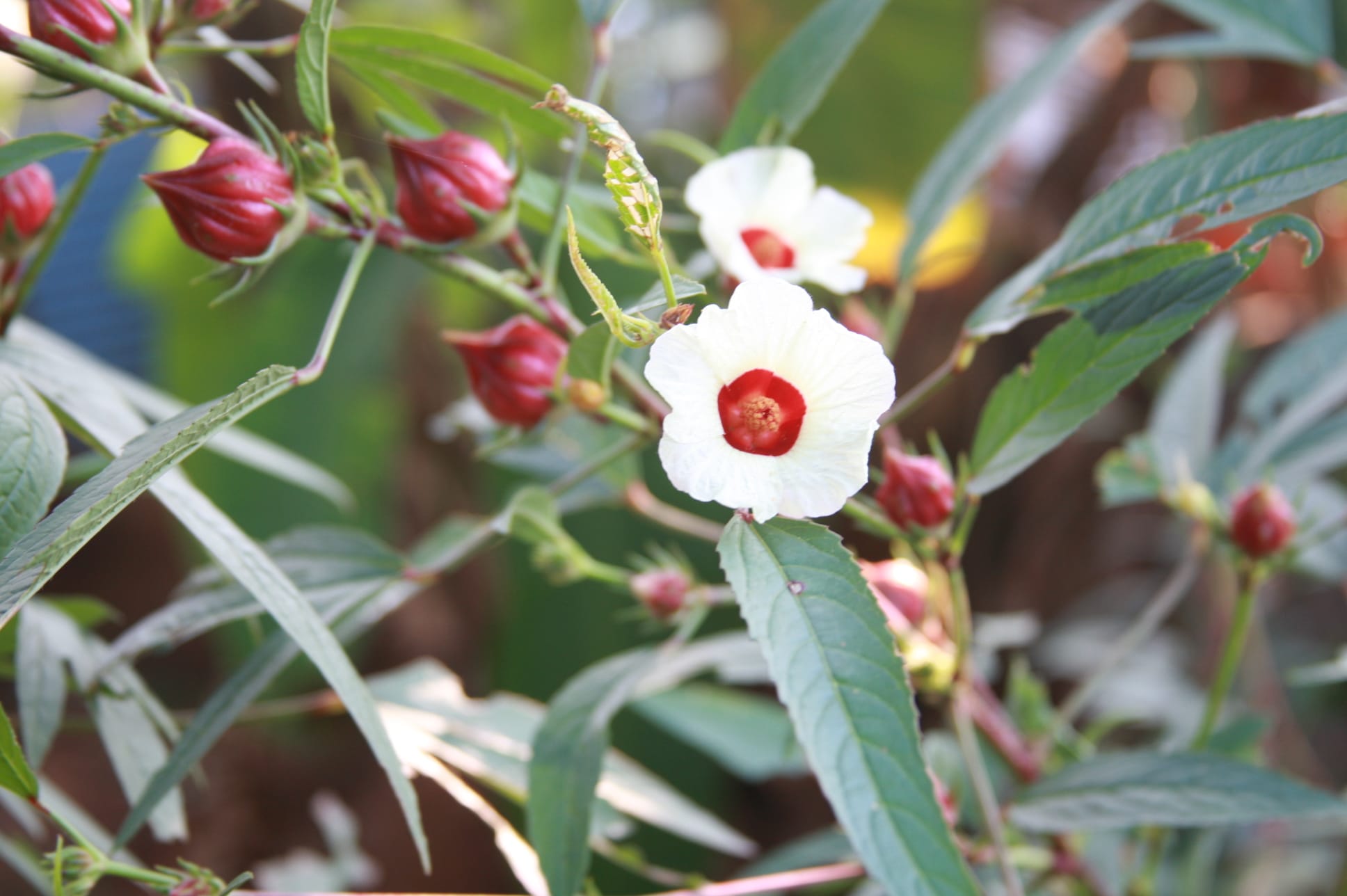Abstract
Roselle (Hibiscus sabdariffa) is a versatile plant renowned for its nutritional, medicinal, and economic benefits.
This article explores the benefits of Roselle and its history, characteristics, environmental advantages, and wide-ranging applications, from culinary delights to industrial uses.
It also examines its economic significance, challenges in conservation, and nutritional benefits while shedding light on its role in traditional dishes.
Finally, cautionary advice is provided to ensure safe consumption.
Introduction
Roselle, scientifically known as Hibiscus sabdariffa, is a tropical plant celebrated for its vibrant flowers and various health benefits.
Native to Africa but now cultivated worldwide, this plant offers a multitude of advantages for human health, environmental sustainability, and the economy.
Its tangy flavor and striking color make it a favorite ingredient in teas, syrups, and traditional dishes. Roselle has become increasingly popular in recent years due to the global shift towards natural remedies and plant-based diets.
As a rich source of antioxidants and essential nutrients, it plays a significant role in promoting health and well-being.
Additionally, its versatility allows it to be used in diverse industries, from food and beverages to cosmetics and textiles.
History
The origins of Roselle can be traced back to West Africa, where it was traditionally used for its medicinal properties and as a natural dye.
Indigenous communities valued it for its ability to treat various ailments, including infections, fevers, and digestive issues.
Over time, its cultivation spread to Asia, the Americas, and the Caribbean, adapting to different cultural practices and climates.
In India, Roselle is known as “gongura” and is a staple in regional dishes, while in the Caribbean, it’s a cherished ingredient in festive drinks.
Historically, Roselle was also used in ancient Egypt as a cooling beverage to combat the desert heat.
Today, it is widely recognized for its global culinary appeal, cultural significance, and health-enhancing properties, making it a symbol of tradition and innovation.
Characteristics Of Roselle
Roselle is an annual or perennial shrub belonging to the Malvaceae family.
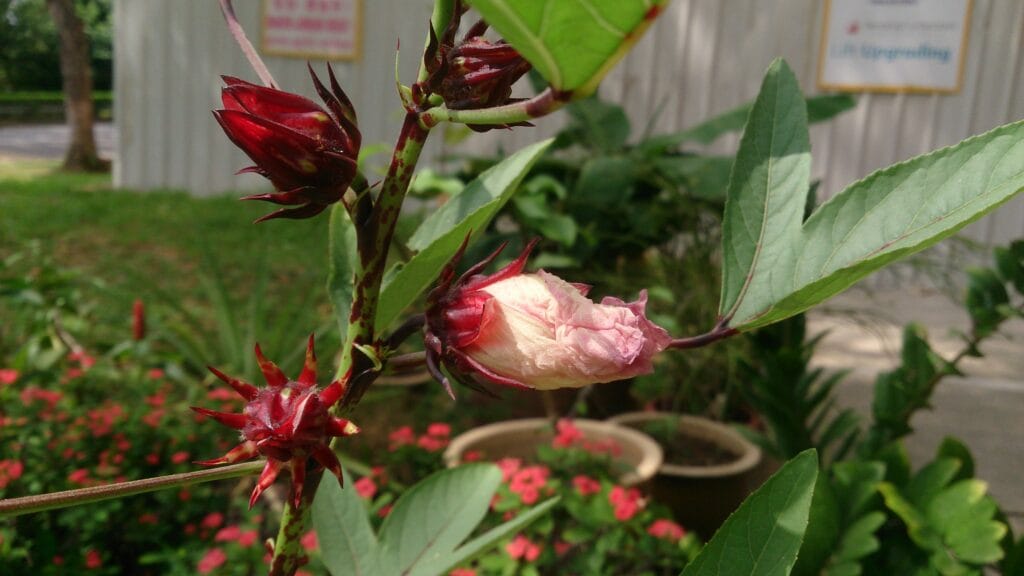
It typically grows to a height of 2-3 meters and thrives in warm, tropical climates. Its distinctive features include vibrant red calyces, serrated leaves, and fleshy stems.
The plant is drought-resistant and adaptable, making it a popular choice for farmers in arid regions.
Environmental Benefits
- Soil Enrichment: Roselle improves soil fertility by reducing erosion and increasing organic matter.
- Carbon Sequestration: As a fast-growing plant, it aids in carbon capture, contributing to climate change mitigation.
- Biodiversity Support: Its flowers attract pollinators like bees, fostering local ecosystems.
Benefits Of Roselle
Here are some benefits of Roselle:
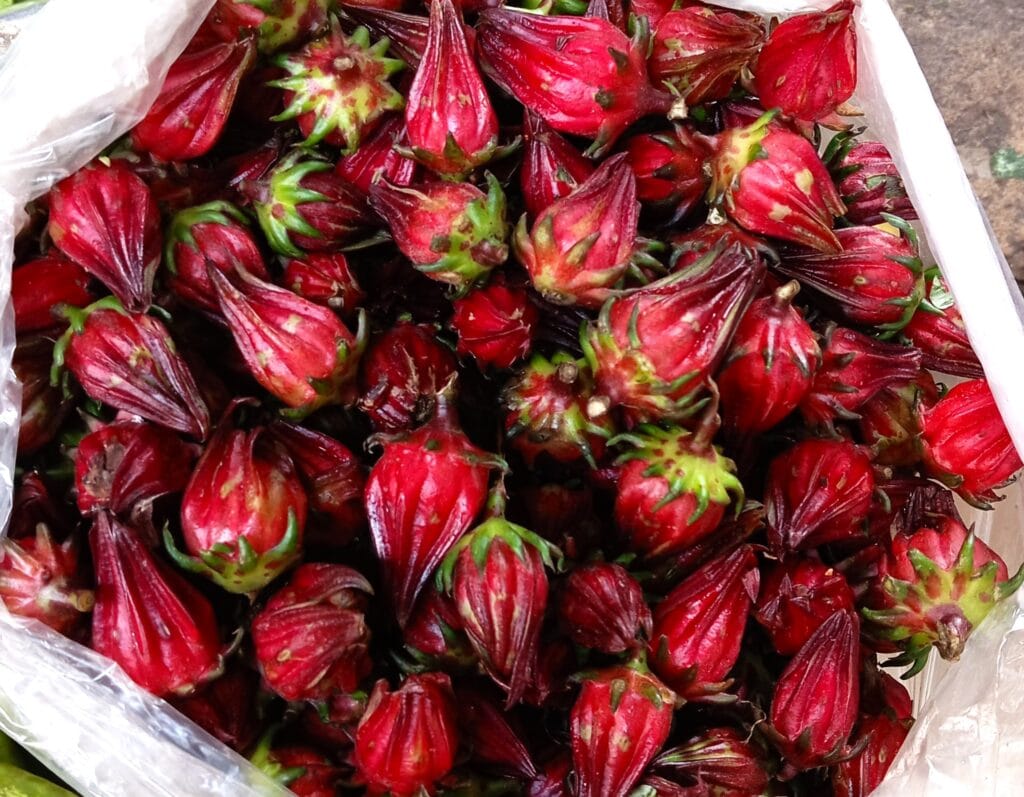
- Rich in Antioxidants: Roselle is packed with anthocyanins and other antioxidants that combat oxidative stress.
- Lowers Blood Pressure: Regular consumption of Roselle tea has been shown to reduce hypertension.
- Boosts Immunity: Its high vitamin C content strengthens the immune system.
- Supports Digestive Health: The plant’s fiber content aids in digestion and prevents constipation.
- Anti-inflammatory Properties: Roselle’s bioactive compounds help reduce inflammation, beneficial for conditions like arthritis.
- Promotes Weight Loss: Its diuretic properties and low-calorie content make it ideal for weight management.
- Improves Liver Health: Studies suggest that Roselle can help protect the liver from damage and support detoxification processes.
- Regulates Cholesterol Levels: It helps reduce LDL cholesterol, contributing to better heart health.
- Anti-Cancer Potential: Preliminary research indicates that Roselle’s polyphenols may have cancer-fighting properties.
- Skin Health: The antioxidants in Roselle promote healthy, glowing skin by reducing signs of aging.
Uses
- Culinary: Used in beverages, jams, and desserts.
- Medicinal: Employed in traditional remedies for fever, cough, and inflammation.
- Industrial: Utilized as a natural dye and in cosmetics.
Economic Significance
Roselle cultivation provides livelihood opportunities for farmers and is a source of export revenue. Countries like Sudan, India, and Thailand dominate the global market, exporting dried calyces for herbal teas and other products.
Market
The global Roselle market is growing due to increased demand for natural, plant-based products. Key markets include herbal teas, dietary supplements, and organic cosmetics.
Trends indicate a shift towards sustainable and eco-friendly farming practices.
Conservation and Challenges
Despite its benefits, Roselle faces challenges such as pests, diseases, and declining genetic diversity. Conservation efforts focus on sustainable farming and the preservation of wild strains.
Additionally, climate change poses a threat to its cultivation, requiring innovative agricultural practices to ensure its survival.
Farmers and researchers are also exploring ways to enhance yields while minimizing environmental impact.
Interesting Facts About Roselle
Here are some interesting facts about Roselle:
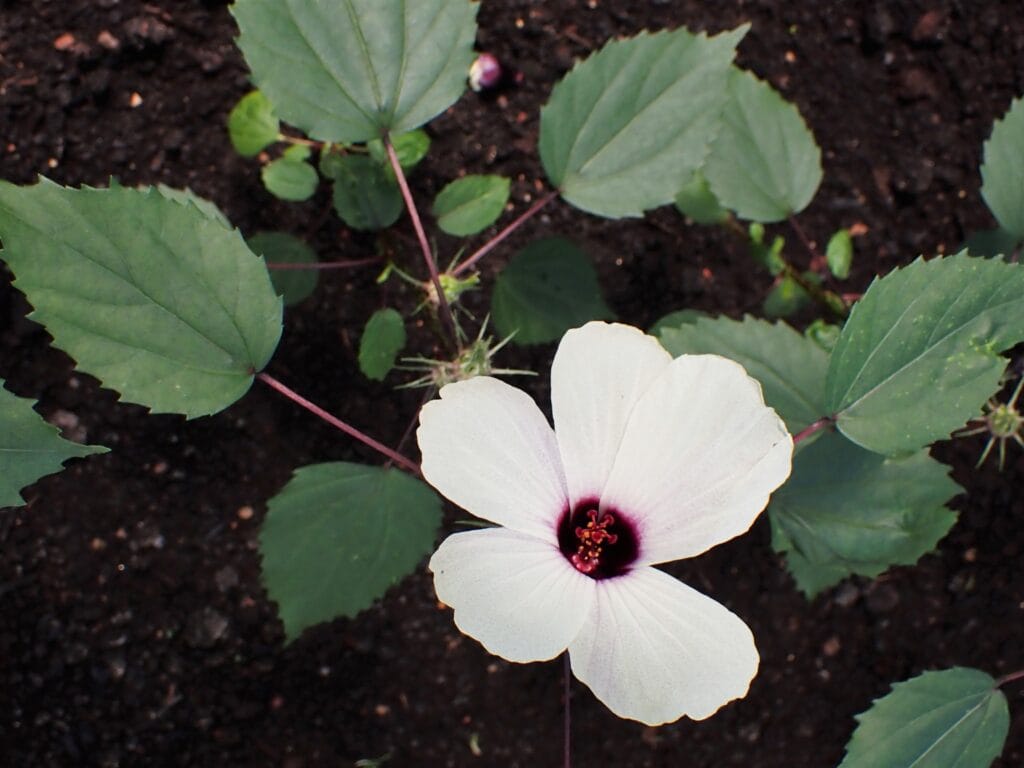
- Roselle is called “Florida Cranberry” in the United States due to its tart flavor.
- In Sudan, it is a staple for making “Karkadeh” tea.
- The calyces are not only edible but also rich in pectin, ideal for jam-making.
- Roselle flowers are a popular decorative element in gourmet dishes.
- The plant’s seeds are used to produce oil with potential applications in skincare.
- Roselle is a traditional gift in some cultures, symbolizing health and prosperity.
- The fiber from its stems can be used to make ropes and sacks.
- It is known to have been consumed by ancient Pharaohs for its refreshing properties.
Culinary Uses
Roselle’s tangy calyces are used in beverages like teas and juices, jams, chutneys, and desserts. They impart a vibrant red color and unique flavor to dishes.
Nutritional Benefits
- High in Vitamins: Particularly vitamin C and A.
- Rich in Minerals: Contains calcium, magnesium, and iron.
- Low in Calories: Ideal for weight management.
Traditional Dishes Of Roselle
Here are some traditional dished of Roselle:
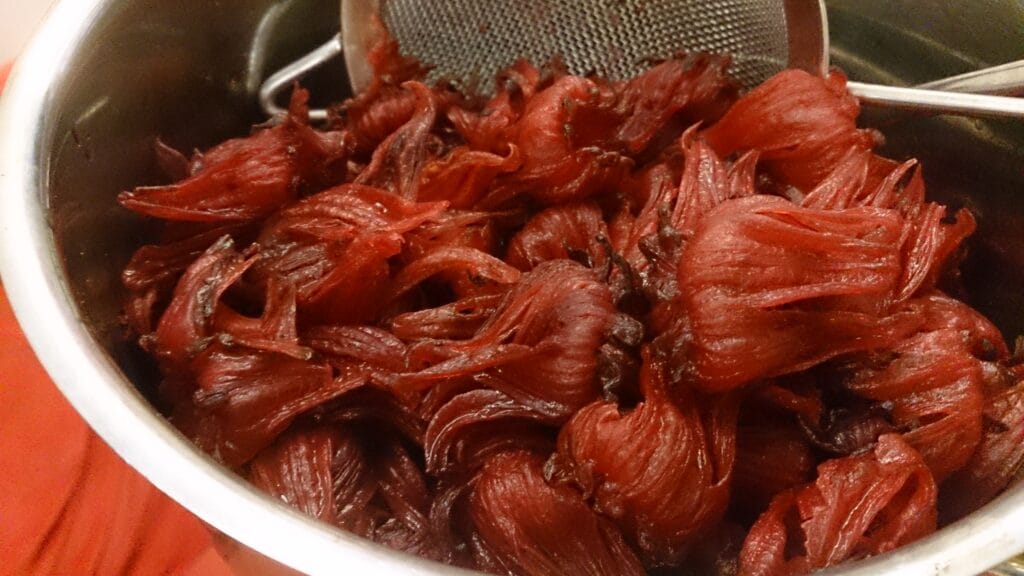
- Karkadeh Tea: A traditional drink in Egypt and Sudan.
- Sorrel Drink: Popular in the Caribbean during Christmas.
- Roselle Jam: A tangy spread used in Southeast Asia.
Caution
While Roselle offers numerous benefits, certain precautions should be observed. Its high oxalate content means excessive consumption may lead to kidney stone formation in susceptible individuals.
People on medication for hypertension should consult their doctor before consuming Roselle regularly, as it may enhance the effects of these drugs, leading to hypotension.
Pregnant women and breastfeeding mothers are advised to seek medical guidance before including Roselle in their diet due to potential hormonal effects.
Additionally, individuals with known allergies to hibiscus or related plants should exercise caution to avoid adverse reactions.
Conclusion
Roselle (Hibiscus sabdariffa) stands out as a plant of immense value, offering a plethora of benefits ranging from health and nutrition to environmental sustainability.
Its adaptability and economic potential make it a vital crop for various regions. By addressing conservation challenges and promoting its safe use, Roselle’s legacy as a beneficial and versatile plant can be preserved for generations to come.
With its myriad applications in culinary arts, medicine, and industry, Roselle embodies the perfect balance of tradition and innovation.
However, responsible consumption and sustainable farming practices are essential to maximize its benefits while mitigating potential risks.
Through education and awareness, we can ensure that this remarkable plant continues to thrive and enrich lives worldwide.
Also Read: Benefits of Malvarosa (Pelargonium graveolens) A Detailed Analysis of its History, Benefits, Uses, Facts and Safety
Well, what do you think about the article?
Did you enjoy reading “Benefits of Roselle (Hibiscus sabdariffa) Exploring Its History, Benefits, Uses, and Safety“?
We really hope that you have found this article informative and engaging. If you have any thoughts or comments about this post, please feel free to share them in the comment section below. We appreciate your feedback and would be glad to hear from you.
To see more content like this check the gardening section of Money For My Beer.

